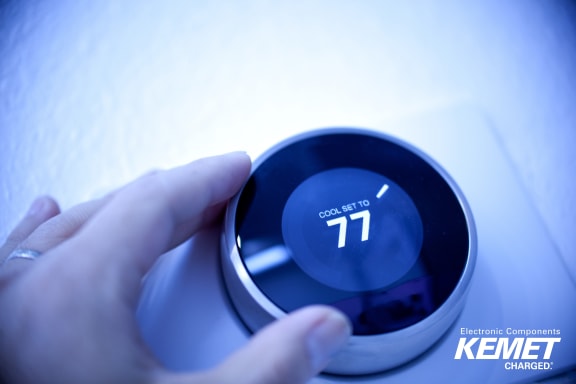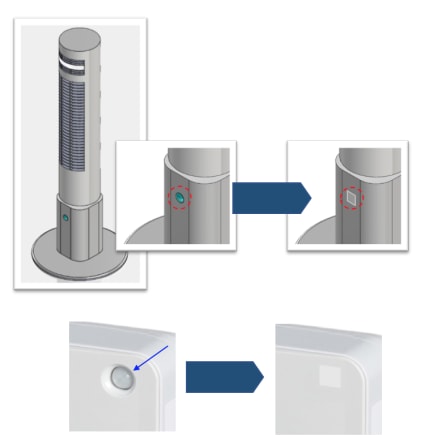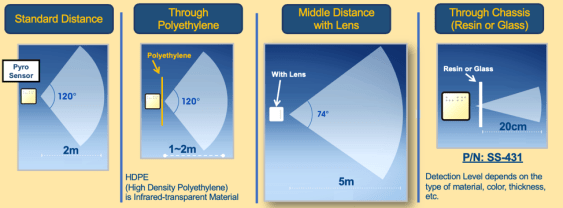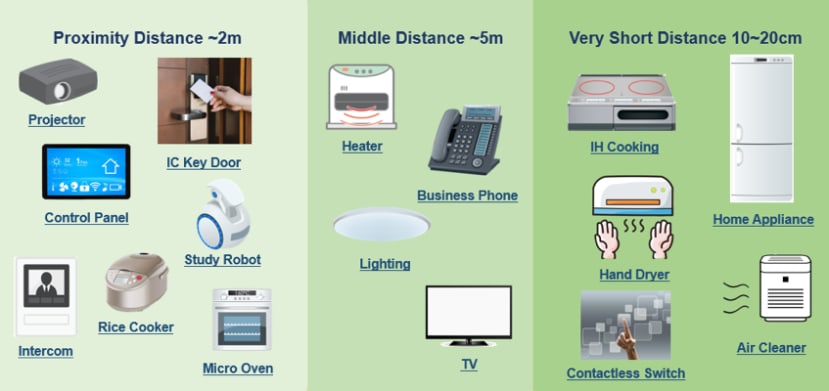Make Sense of KEMET's Proximity Sensor
Follow articleHow do you feel about this article? Help us to provide better content for you.
Thank you! Your feedback has been received.
There was a problem submitting your feedback, please try again later.
What do you think of this article?
When I visited my family a couple of months ago, I noticed that my dad had purchased one of those smart thermostats and installed it. It seems like every time I go home my dad shows me some random gadget that he finds online. This particular purchase was actually a good one, unlike the heated mousepad he had previously ordered. Who even needs a heated mousepad?
Anyway, the smart thermostat is a good investment because you can save a lot of energy, have remote access, and more. The smart thermostat is designed to make your life easier and do the thinking for you. Some thermostats can even be controlled by your voice using the app Google Now. Pretty cool right?
If you are naturally a curious person or just really interested in how things work, you start noticing things that other people don’t. When I was playing around with the thermostat, I saw that the display stays off when no one is around, and it only turns on when someone walks up to it.
That is when I realized the thermostat probably uses a proximity sensor to detect humans around it. After I made this genius discovery, I started exploring other objects in my house that make use of this technology. I found that the water/ ice dispenser light on the refrigerator lights up when I'm close to it and that my dad has a weighing scale that automatically turns on! No surprise there. The application market for proximity sensors are endless: this technology is already being used in many areas including automotive, industrial/ home automation, and home appliances, to name a few.
How does it work?
Regular infrared sensors have a transmitter and a receiver, and whenever there is an object in front of the transmitted ray it bounces back and is received by the receiver. This creates a voltage level across the terminal. KEMET's Pyroelectric Infrared Sensors take advantage of ceramic’s pyroelectric effect by absorbing the infrared rays emitted from the human body. This allows the sensors to detect the infrared signature naturally emitted by humans. The important feature here is energy saving! The proximity sensor only turns on when there is a person in its perimeter. Pyroelectric effect is the ability of certain materials to generate a temporary voltage when heated or cooled; Ceramics just happen to be one of these materials.
The aesthetic flexibility and design versatility of KEMET's Pyroelectric Infrared Sensors are also very impressive. They are about the size of a fingernail, so basically disappear in your application. The pictures below show a few applications, and as you can see, our proximity sensors are barely visible.
Typical infrared sensors require a lens, but KEMET’s proximity sensor can work without the use of a lens with a range of 2 meters. If your application requires a longer detection distance, then you can add a lens and increase your range to 5 meters. We also have a new product for short distance applications. This product can detect through glass or resin with a range of 20 centimeters.
What else can I do with it? (Warning: Extreme Excitement)
The application market for these sensors is endless! You can find this sensor pretty much everywhere, including your home, restrooms, offices, factories and vehicles. The figure below shows potential areas of application for our proximity sensor.
The IC Key door application is very interesting to me because I have a friend who could put this to use. He owns a hotel, and he’s always complaining about how much his electric bills are. I recommended that he replace all his key door modules with ones outfitted with our proximity sensor. At most hotels, the door module is receiving power 24/7, just waiting for the guest to approach the door with the key. All that power is wasted, except for the few moments when a guest approaches to open the door. If the hotel makes use of our 1-2-meter range proximity sensor, they can save a great deal of energy, as the door will only power on when a person is 1-2 meters away from the sensor or closer. Pretty awesome right?
Another way that KEMET's Pyroelectric Infrared Sensors can be used is with business phones. The business phone application is mostly used in an office or factory setting. The phone can serve as a secret security system. If an employee or a person enters the office when they are not supposed to the phone can activate when that person is next to it. The next day, security will get a report of how many times the phone turned on. This might seem like a silly application, but this would be a clever security measure for offices with a lot of confidential and sensitive information. Or even more effective, the activation of the business phone can notify security immediately or turn on an alarm.
The short distance proximity sensor application is already implemented all around you. For example, home appliances, my dad’s smart thermostat & scale, hand dryers, and smart toilets all use this type of sensor.
KEMET makes your life easier (Plug & Sense)
Designing in a sensor can be complicated, we don’t want to make your life harder than it already is. I already mentioned how you can extend the range of the sensor by adding a lens, but we took it one step further. What if I told you that installing our proximity sensor can be almost as simple as screwing in a light bulb? Yup, we also offer proximity sensor packaged in our module solution and it's even easier to install. You don’t need a driver because it is already included in the package, this makes our proximity sensor really just “plug and sense”.
Are you ready for the future?
The future of technology is very bright, with new innovations and ideas popping up every day. As the world becomes more automated, sensors will continue to play an integral role in making this happen. Sensors have made a serious impact in automotive, industrial, medical, and aerospace applications. The combination of sensing power, computing power, and artificial intelligence is propelling advances in transport, like Advanced Driver Assistance (ADAS). These same technologies will eventually be perfected, making autonomous vehicles and autonomous drones possible. In addition, combining existing sensing technologies, like cameras and ultrasonic, with emerging technologies like Lidar, will allow a car to ‘see.’ Estimates are that over 200 sensors will be in a vehicle in the next 5 to 7 years.
At KEMET, we love technological innovation, and we stand at the forefront of cutting-edge technology. Products like KEMET's Pyroelectric Infrared Sensors help make our vision to be the world’s most trusted partner for innovative component solutions attainable. Are you interested in seeing how our proximity sensor works? Click here to read an interesting blog that demonstrates the capabilities and benefits of using KEMET’s proximity sensor.









